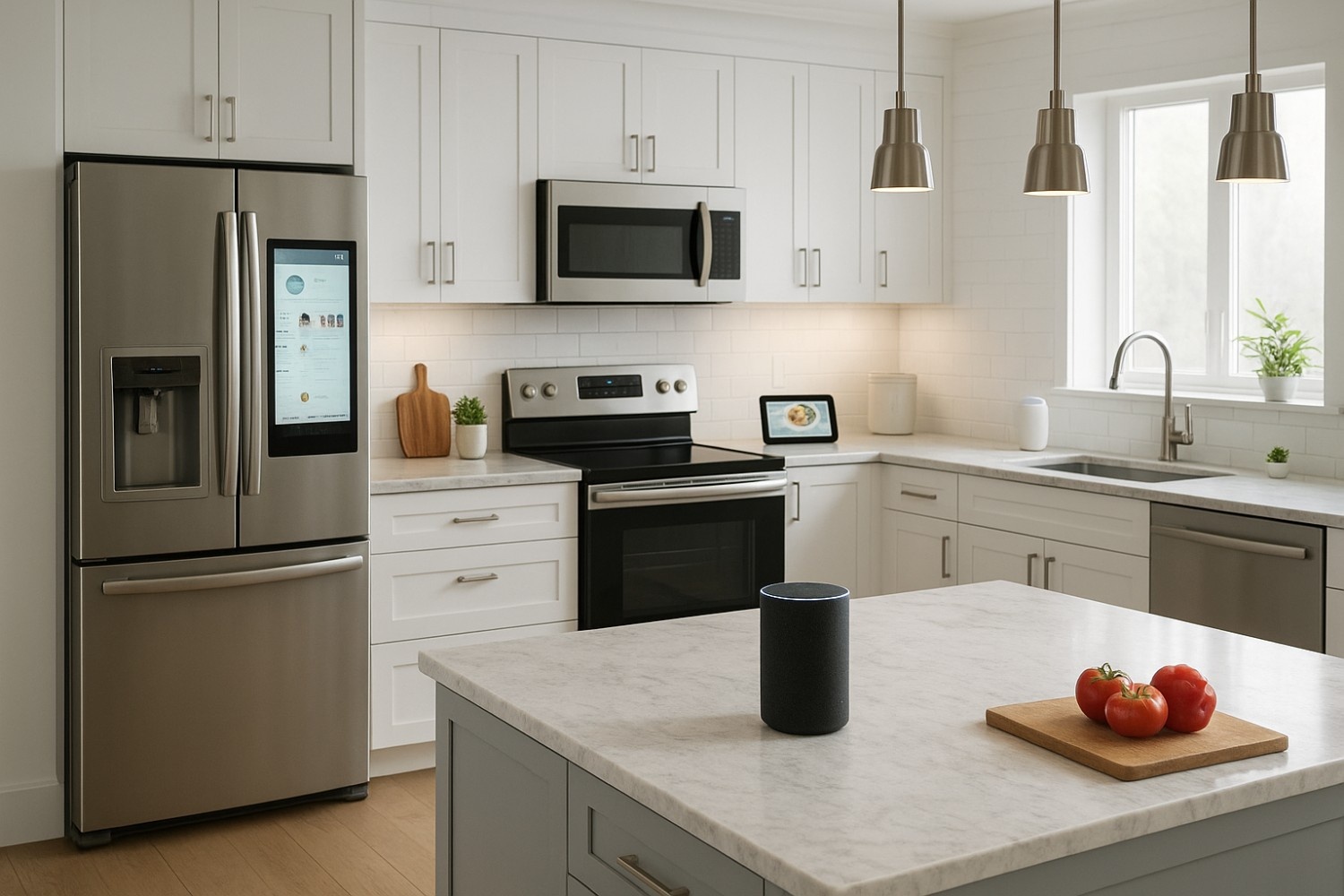The Rise of Smart Kitchens: Gadgets That Make Cooking Effortless
In recent years, American homes have seen a quiet revolution taking place — one happening right inside the kitchen. What was once a purely functional space for cooking has evolved into a high-tech hub of innovation, efficiency, and style. The rise of smart kitchens is transforming how people prepare food, save time, and even reduce waste. With connected appliances, AI-powered gadgets, and app-driven devices, cooking in 2026 has never been easier — or smarter.

A Connected Kitchen Revolution
Smart kitchen technology blends convenience and innovation. From voice-activated assistants that control your oven temperature to refrigerators that remind you when the milk is running low, the connected kitchen ecosystem is designed to simplify daily life.
Major appliance brands like Samsung, LG, and GE are leading the trend with refrigerators that feature touchscreen displays, built-in cameras, and AI-powered food inventory systems. These allow users to check what’s inside their fridge remotely — a game-changer for grocery planning. Smart ovens, like the June Oven or Tovala Smart Oven, can automatically identify what you’re cooking and adjust settings for the perfect result every time.
The true magic lies in integration. With platforms like Amazon Alexa, Google Assistant, or Apple HomeKit, homeowners can now control their entire kitchen with voice commands. “Alexa, preheat the oven to 375 degrees,” is quickly becoming as common as “What’s for dinner?”
Making Cooking Easier for Everyone
One of the most appealing aspects of smart kitchen gadgets is how they reduce the effort and guesswork in cooking. For beginners, this means confidence; for busy families, it means saving time.
Smart scales and recipe apps automatically measure ingredients and guide you through cooking step-by-step. Devices like the Instant Pot Duo Smart connect to mobile apps, allowing users to adjust settings from anywhere in the house. Some even send alerts when food is ready, making multitasking safer and easier.
AI-driven cooking assistants are another emerging trend. Apps such as SideChef or Samsung SmartThings Cooking use artificial intelligence to suggest recipes based on the ingredients you already have at home. This minimizes food waste and helps families make the most of what’s in their pantry.
Energy Efficiency and Sustainability
Modern American homeowners are not only looking for convenience but also sustainability. Smart appliances are designed to use energy efficiently, often running diagnostics to recommend eco-friendly settings.
For example, smart dishwashers can detect load size and soil levels to use just the right amount of water and detergent. Smart fridges can enter energy-saving mode during peak hours or when they detect fewer door openings. Together, these small optimizations contribute to lower energy bills and a reduced environmental footprint.
The Role of Data and Personalization
The more you use your smart kitchen, the smarter it becomes. Devices learn your preferences — how crispy you like your toast, how long you brew your coffee, or what time you usually start dinner. This personalization transforms the cooking experience from manual to predictive.
However, as with all connected technology, data privacy is an important consideration. Most manufacturers now provide secure cloud storage and encrypted connections to protect user information. Still, users are encouraged to review privacy settings and choose trusted brands that prioritize data security.
What’s Next for Smart Kitchens?
The next wave of smart kitchen innovation is expected to include AI meal planners, robotic cooking arms, and fully automated dish-cleaning systems. Imagine coming home to find dinner prepared, your fridge restocked, and your oven self-cleaned — all without lifting a finger.
While that level of automation might still be a few years away, many of its foundations are already in place. The American kitchen is no longer just a space to cook; it’s becoming a personalized, intelligent ecosystem designed to enhance comfort, creativity, and connection.
Final Thoughts
The rise of smart kitchens marks more than just a technological upgrade — it represents a lifestyle transformation in American homes. Cooking is no longer a daily task defined by effort and time; it’s evolving into a personalized, data-driven experience that blends creativity, convenience, and sustainability.
With every new gadget — from voice-activated ovens to AI recipe planners — homeowners gain more control over their routines and energy use. These tools don’t just make cooking faster; they make it smarter. Families are spending less time managing the details and more time enjoying meals together, while eco-conscious consumers are using data insights to reduce waste and energy consumption.
What makes this shift truly remarkable is how accessible it’s become. Just a few years ago, smart kitchens were considered luxury upgrades found in high-end homes. Today, affordable smart appliances, Wi-Fi-enabled gadgets, and AI-integrated apps are bringing innovation to everyday households across the U.S. The result is a kitchen that adapts to your lifestyle — whether you’re meal-prepping for a family of five or experimenting with recipes after work.







